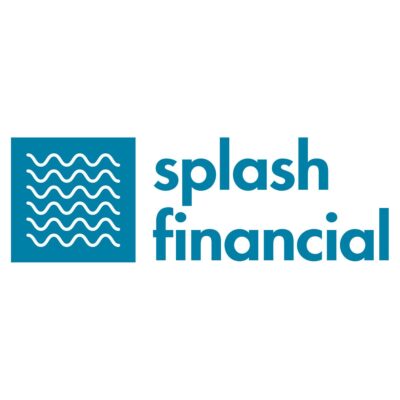Refinancing your student debt could save thousands of dollars in interest over the life of your loan; however, every borrower’s situation is unique.
As you compare student loan refinance quotes, make sure your new loan will pay off. For example, you could lose valuable protections such as flexible repayment plans and loan forgiveness programs.
After we get to know some of the best student loan refinance companies, I’ll provide some tips on how to get the lowest rates and some pointers on when refinancing your student loans may or may not make the most sense.
If you need help visualizing how much you can save, use our simple student loan refinancing calculator to see how much lower your payments could be at various interest rates.
Best Student Loan Refinance Companies
Here are the top 12 lenders for student loan refinancing & consolidation in 2024:
- 🏆 Splash Financial: Best Overall
- Earnest
- LendKey
- SoFi
- Laurel Road
- Discover
- CommonBond
- College Ave
- Citizens Bank
- First Republic
- Education Loan Finance
- StudentLoan.com
Splash Financial
Splash Financial works with other leading lenders such as Laurel Road and PenFed to offer a niche service: Helping married couples refinance their separate loans into one loan.
I also like Splash Financial’s personal approach. You’ll be assigned a personal loan officer to help guide you through the process of your refi.
Before finalizing your loan, be certain you can make the payment comfortably. Unlike your federal lender, Splash doesn’t offer forbearance or payment restructuring plans.
Earnest
If you’re shopping for the lowest rates, you’ll probably like what Earnest has to offer. Since Earnest has a 20-year term loan, you can usually achieve lower monthly payments.
But these benefits will be available primarily to applicants with good credit histories. So if you’ve just graduated, you may need to wait a couple of years to qualify for the best rates.
And, Earnest doesn’t allow co-signers so you can’t benefit from your parents’ or spouse’s good credit histories.
LendKey
LendKey makes my list because it combines a lot of good qualities: flexibility, competitive rates, and a variety of loan terms.
Although this lender can issue its own loans, many of its refinance loans connect borrowers with local credit unions and regional banks.
Terms can range from 5 to 20 years, and LendKey will let you enter a period of forbearance just like your typical federally subsidized lender would do.
SoFi
SoFi’s name recognition and its array of lending products have been growing in recent years. For student loan refinances, SoFi would require you to borrow at least $5,000.
SoFi seeks to be more than a lender. It offers career networking events, and the lender can even help you find a new job.
The company also has an unconventional approach to determining your eligibility as a borrower: It will consider your earning potential along with your credit score and debt-to-income ratio.
So even if you don’t have a solid credit history, you may still do well with SoFi if you’re in a high paying profession.
Laurel Road
Future physicians and dentists like Laurel Road because this lender can refinance student debt while in residency.
Laurel Road has advantages for the rest of us, too. For example, you could release your co-signer from the loan after making 36 consecutive on-time payments. And, you can get an accurate estimate without needing a hard check of your credit.
On the downside, you wouldn’t be able to freeze your loan if you went back to college for another degree in a few years. Most other lenders offer an academic deferment.
Discover
Discover offers consolidation and refinancing for both federal and private student loans. You can apply quickly and easily online through your computer or mobile device.
After selecting either a fixed or variable interest rate and verifying the student loans you would like to consolidate, all that’s left to do is sign the online application.
There are no fees required to apply and you could qualify for a .25% interest rate reduction by signing up for AutoPay.
CommonBond
Commonbond deserves a close look for student loan refinancing if flexibility is a must for your financial life.
Borrowers can get a 24-month forbearance if needed. And you could release your co-signer from the loan down the road. You could even refinance into your name a PLUS loan your parent or guardian took out on your behalf while you were in school.
I also like any lender that can give you a solid estimate without a hard check on your credit.
College Ave
Borrowers who’d like to refinance a smaller amount — or borrowers who want to start repaying their loans while still in school — should give College Ave a close look.
You could refinance as little as $1,000 or as much as $80,000 with College Ave. Loan terms do not exceed 15 years.
If you’re still a student and you’re concerned about having interest charges accumulate during your academic deferment, College Ave can help: You could set up an interest-only payment plan with payments as low as $25 a month.
College Ave does not have an official forbearance policy, but the company will consider requests for forbearance on a case-by-case basis.
Citizens Bank
Citizens Bank, which uses the name Citizens One in some markets, can help borrowers refinance student debt even if they didn’t finish a degree.
This lender also has a high ceiling — $500,000 — which can help people with advanced degrees refinance their old student debt.
Interest rates with Citizens Bank trend higher than the national average, but you can get a 0.25 percent point discount if you have another Citizens Bank account.
Borrowers can release their cosigner from his or her obligation on the loan after making on-time payments for three consecutive years.
Citizens does not offer forbearance options, but the lender’s customer service staff will consider case-by-case requests for more flexible repayment options.
First Republic
First Republic Bank caters to well-qualified borrowers who need loans of $25,000 or more ($40,000 or more for people with graduate degrees). Loan terms do not exceed 15 years.
If you qualify, you could get some of the best interest rates in the market, saving up to thousands of dollars depending on your level of debt.
But there’s another catch: To refinance your student loans with First Republic, you’d have to first have a First Republic checking account and live in an area with a branch.
The bank serves California, New York, New England, and parts of Florida along with Jackson, Wyoming.
If you live near a First Republic branch, and you’d like to refinance your student debt, give First Republic a close look. Keep in mind, the bank does not offer forbearance or payment restructures.
Education Loan Finance
Education Loan Finance, or ELFI, specializes in refinancing student debt, and the lender values customer service more than a lot of companies.
If you apply, you’d be working with a personal loan advisor who will be available via phone, text, or email to guide you through the application process.
You would need to borrow at least $15,000, and loan terms do not exceed 20 years.
Education Loan Finance has flexible repayment options, but if you return to school you won’t be eligible for an academic deferment.
Studentloans.com (Brazos Higher Education)
Texans who need at least $10,000 in student debt refinanced can access great rates through Brazos Higher Education, a non-profit lender.
The qualifications to borrow include:
- Being a resident of Texas.
- Needing at least $10,000 refinanced.
- Having a 720 or higher credit score.
- $60,000 annual income ($30,000 if you have a cosigner).
- Debt must come from an accredited U.S. college or university.
If you meet these requirements, Brazos can help you save a lot in interest charges, partly because the lender is not seeking a profit.
Brazos does have forbearance options, but they’re limited when compared to a federal lender’s guidelines.
For example, natural disaster or economic hardship forbearance periods can’t exceed three consecutive months with a Brazos loan. Throughout the life of your loan, your economic hardship forbearance could not exceed 12 cumulative months.
Student Loan Refinance Interest Rates
Getting a lower interest rate inspires many of us to refinance student debt.
Lower interest means lower payments and less money out of your pocket throughout the life of your loan.
You can refinance any time you qualify for a lower rate, but refinancing every couple months will get tedious and time consuming.
Most people like to be more strategic. For example, waiting until you can shave at least 1% from your interest rate is a good rule of thumb.
How to Get the Best Student Loan Refi Offers
To have the most options for your refinance, you’ll need to excel in the following areas of your financial life.
If you fall short in one or more of these areas, consider spending a few months, or even years, making improvements. Making some improvements could unlock even more savings.
Credit Score:
Always work to improve your credit score before applying for a refinance, if needed. Having the best credit possible given your situation is critical to getting better interest rates. If you have bad or fair credit, take the time to strategize improving your credit. Once you have a credit score above 650 or closer to 700, you will probably start to see interest rates start to drop when refinancing. Check yours now for free at Credit Sesame.
Work Experience:
Lenders want to see that you can keep and manage your salary, while paying off current debts. Having a solid job for over a year can go a long way to help you look attractive to lenders.
Current Market Rates:
This one is simple. Keep an eye on current market rates to make sure you’re not leaving money on the table. It doesn’t take much time to see when interest rates are as low as possible.
Low debt-to-income ratio:
Your debt-to-income ratio is tied closely to your credit score. It’s always an important and separate element that lenders look at in determining your ability to pay off newly refinanced student loans. Lower your debt-to-income ratio to improve your chances of getting the best offer.
Types of Student Loan Refinance Rates
You can also take control of the process by deciding what type of student loan interest rate you need:
Fixed vs. Variable Rates:
Fixed rates will not change throughout the loan’s duration. Variable interest rates can increase or decrease periodically. If you prefer the predictability of a fixed monthly payment, you may prefer a fixed rate. But if interest rates remain low, variable rates can provide a lower overall repayment in comparison.
Short- vs. Long-Term Repayment:
Refinancing your student loans with a long-term repayment plan (15 or 20 years) might be attractive because these loans lower your monthly payment. But remember: interest rates will be higher on long-term loans and will cost you more money in the long run. Short-term repayment plans (5 years) will have lower interest rates but will result in higher monthly payments compared to a long-term loan, you can see sample payment amounts below.
| Years | APR | Monthly Payment | Total Payment |
|---|---|---|---|
| 5 | 3.14% | $740 | $44,393 |
| 10 | 3.54% | $404 | $48,450 |
| 15 | 3.91% | $300 | $53,942 |
Keep in mind that rates change frequently.
Student loan interest rates are a function of the broader economy. If rates start to increase, you may want to pull the trigger on a refinance before rates increase even more. If rates start to fall, you can potentially maximize your savings by waiting for the next drop in rates. You don’t have to be an economist to track interest rates. Just check out some finance news sites while you’re loan shopping.
If you can’t qualify for a lower interest rate on your own because you have a shaky credit history or because you have never gotten a loan, consider having your spouse or parent co-sign. Some lenders will release your cosigner from his or her obligation on the loan after you’ve made on-time payments for a specified period. If you have a derogatory mark on your credit report and can get it resolved, do so before refinancing your student debt.
How To Compare Student Loan Refinance Lenders
All of the lenders on my list above excel, but one or two may meet your needs better than the others.
You can get as many quotes as you want. Many borrowers get only three, or even fewer quotes, thinking other quotes would offer the same or similar rates. This shortcut can prevent you from finding the best deal available.
No matter what numbers you see in your quotes, be sure to consider other factors beyond the interest rate which could lead to extra costs or extra savings:
- Flexibility: What kinds of loans do you need to finance? Are you looking for fixed or variable rate loans? Will you need flexible repayment options?
- Interest Rates: Keep an eye out for competitive rates. Make sure you match your total savings goal with the rates being offered.
- Benefits: In cases of financial hardship, such as losing your job, can your lender offer a forbearance, letting you get back on your feet before restarting payments? Keep a running list of the things you need from a lender, and be diligent about getting as many of those benefits when refinancing.
- Process: Make sure you are comfortable with the steps required by the lender before accepting an offer to refinance your student loans. How long does it take from application to refinance? Take the time to get all of your questions answered.
Compare Multiple Rates and Options Without A Hard Credit Check
Credible is a marketplace where you can compare student loan refinance options and lender rates in one place at no cost to you. They will even offer you up to $750 if you finalize a loan through their site.
Its current list of lenders includes Advantage Education Loans, Brazos, Citizens Bank, College Ave, EDvestinU, ELFI, MEFA, PenFed, RISLA and SoFi.
Unlike other sites, Credible will not allow its lenders to run hard credit checks until you’re ready to finalize your loan.
I cover more of their features in my Credible student loan review.
Is Student Loan Refinancing a Good Idea?
Even when you’re working with a great lender, you’re still the expert on your life and your debt.
Your refinance may save a lot in interest but cost a lot in lost loan protections and flexibility.
The following details should help you put your specific needs into context.
Public vs. Private Loan Refinancing
If you have private student loans from a bank, credit union or an online lender, you’re probably a good candidate for refinancing.
If you have public student loans, consider whether you’d use the following features before losing them in a refinanced loan.
- Flexible Repayment: Public loans often have flexible repayment features such as Pay-As-You-Earn (PAYE) which base your monthly payment on your earned income.
- Forbearance: Public lenders offer forbearance plans which let you stop making payments for a specific time period if you can’t afford to pay. Interest typically continues to compile even when you’re not paying. Many private lenders do not offer loan forbearance plans.
- Forgiveness: Some borrowers who work in the public sector can get their public student loans forgiven. Refinancing into a private loan would eliminate this possibility.
If you would use any of these features of your public loans, you may want to keep your public loans even if they cost more in interest. Refinancing with a private lender would eliminate these government loan protections.
And as you consider this decision, keep an eye on the political situation. Student loan debt is a hot-button issue in Congress. Our House and Senate members have a lot of influence on public loan policies.
What Could You Be Losing by Refinancing?
Of the $1.2 trillion of student debt currently owed in the United States, more than $1 trillion comes from federal loans.
Because of the sheer amount of federal debt owed by recent graduates, Congress has enacted some special tools to make student loan repayment more affordable and manageable.
If you have federal student loans, refinancing with a private lender would exclude you from some very helpful programs:
- Loan Forgiveness Programs: The Public Service Loan Forgiveness Program and Teacher Loan Forgiveness Program are two of the most commonly used. These wipe out your loans completely after meeting certain requirements.
- Special Repayment Programs: Federal loans often allow borrowers to use different types of repayment plans, including graduated repayment plans, income-driven repayment plans and income-based repayment plans.
- Deferment and Forbearance: If you rely on the occasional forbearance or deferment while paying down your debt, double check on these options with any private lender looking to refinance your debt.
Almost Always Refinance Private Student Loans
Private lenders do not offer Innovative programs like PAYE or debt forgiveness. So if you can save money on interest with a refi, you won’t risk losing any federal protections.
So you have a simpler decision to make with private loans: If you can save money by getting a lower interest rate or a different loan term, the new refinance will pay off.
Should I Refinance Or Use PAYE?
Refinancing could lower your student loan payment along with your interest rate, especially if you go with a 20-year term loan which spreads out your debt over more months.
A federal loan’s Pay-As-You-Earn (PAYE) option can also lower your monthly payment. Depending on your income, PAYE could lower your payment more dramatically than refinancing.
PAYE matches your payment to your earned income. Your loan servicer will use your most recent tax form and your answers to several questions about your family budget to calculate your discretionary spending.
Typically, your payment will not exceed 10 percent of your discretionary income. So each year you’d have to recalculate your payment.
After 20 years on the PAYE plan, your remaining balance would be forgiven. Based on current laws, you would have to pay taxes on the forgiven portion of your loans.
If you have federal loans, you should consider PAYE before refinancing if:
- You work in a low-wage profession and struggle financially.
- You work in the public sector or anticipate working in the public sector, qualifying you for some forms of additional loan forgiveness.
In most cases you will pay more over the life of your loan using a PAYE plan, but you may be willing to make that sacrifice in exchange for an easier-to-manage monthly payment.
If you’re not so worried about the monthly payment, a refinance can shave tens of thousands of dollars off the amount you’ll pay over the life of a loan.
FAQs
Okay — so we’ve been over a lot. Let’s review by answering some frequently asked questions.
Most of this has been covered above, but this format may make the details easier to digest.
Is it worth it to refinance student loans?
This depends, almost entirely, on the details of your loan and your financial life.
Yes, you could save thousands of dollars in interest by refinancing.
For example, if you took out a private loan and your interest rate is above 4 percent, then you may be able to get a lower rate. Even if you have both federal and/or private student loans then you can consolidate them, refinance, and get a better rate.
But you could also lose access to helpful tools like forgiveness options and forbearance periods.
You’ll have to decide where you fall on this spectrum.
Do banks refinance student loans?
Yes, many traditional banks and credit unions will refinance your loans. Banks like Wells Fargo and Citizens Bank have specific student loan refinance programs.
But, typically, you’ll do better taking control of the process by finding an online lender that meets your specific needs.
How often can you refinance student loans?
You shouldn’t need to repeatedly refinance your debt. But, technically, you’re free to refinance any time a lender will approve your loan.
The best times to refinance are when interest rates have fallen a half point or more below the rate you’re currently paying, or when you’d like to combine multiple student loans into one payment.
Also, if you’ve improved your credit score since you borrowed, you may now qualify for better rates and terms, allowing for some significant savings if you refinance.
What is student loan refinancing?
Student loan refinancing works a lot like a mortgage refinance. Your new lender pays off your existing lender. When the process is complete, you owe the new lender the balance of your old loan plus interest and fees.
The entire point is to get better loan terms from your new lender. The improved loan terms can save you money compared to your old loan.
What credit score do I need to refinance student loans?
Unlike federal undergraduate student loans which don’t require a good credit score or an established credit history, a student loan refinance typically has higher credit standards.
Borrowers with a score of 650 or higher should be able to refinance. Of course, lenders have the authority to set their own requirements, and some may require a score as high as 680. Private lenders tend to expect higher scores or at least a co-signer.
Is it a good idea to refinance a student loan?
I get this question more than you might expect. It’s a tough one because the answer depends a lot on your individual needs.
If you’re paying in the 6 percent range on a large balance, especially if it’s a private loan, chances are you’ll save thousands of dollars refinancing — assuming you can qualify for a new loan, of course.
But federal loans have perks you don’t want to ignore, such as the ability to have your loan forgiven and to restructure the payment plan if needed.
Be sure to consider these losses along with the interest rate and loan terms.
Are there any downsides to refinancing student loans?
By trading in public loans for private loans, you’d be losing some federal protections like the potential for forgiveness.
Also, private loans would not be forgiven if you died with a balance on your account. Your family would have to figure out a way to repay the loans. Life insurance can help a lot here.
What’s the difference between private refinancing and federal consolidation?
Great question. Here’s a breakdown:
- Consolidation usually takes place through the Federal Direct Consolidation Program, which lets you combine your government loans so you can make a single monthly payment. You can also extend the term of your loan, at the same interest rate. This could lower your monthly payments but could mean you end up paying more in interest overall.
- Refinancing is when you pay off your old loan, or loans, by taking out a new loan — typically at a lower interest rate. While a lower rate is good news, your new loan may not come with all the borrower benefits associated with government loans.
How do I refinance my student loans?
Here’s a to-do list:
- Find a lender willing to refinance your student loans. The list above provides a great starting point. We’re fortunate to have a growing marketplace of lenders who can refinance both federal and private loans with attractive interest rates.
- Submit a refinancing application. You will need several pieces of information to apply, including your loan balance, income, and credit score.
- Accept. Select the best offer, review the new loan terms and information, and accept.
Am I eligible for student loan refinancing?
Your credit score, your work history, and your debt-to-income ratio will help answer this question. In that sense, refinancing student loans works a lot like mortgage lending.
If you can’t qualify on your own, look for a lender allowing for a co-signer. Whether it’s a parent, a spouse, or a very good friend, a co-signer can make life significantly easier if you have credit challenges.
Some of the best lenders on my list let you release your co-signer from his or her obligations after you’ve made a few years’ worth of on-time payments.
What happens when you refinance student loans?
Refinancing replaces your existing debt with new debt. Your new lender will pay off your old lender.
Then, you’ll owe your new lender payments each month. Ideally, your new lender will offer better terms and rates than your old lender.
Refinance Student Loans If It’s Right for Your Life, Your Debt
Managing your student loans doesn’t mean doing whatever your friends or family members are doing. Always take a look at your current situation and take the time to strategize an attack plan for getting rid of debt.
Refinancing might make a ton of sense for young software engineers just entering the industry, while a public defender or government employee could benefit in the long-run from maintaining their federal loans.
There is no one-size-fits-all formula. Be thoughtful and deliberate with your situation and you can find a solution customized specifically for your life.






No comments yet. Add your own